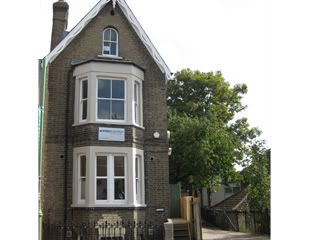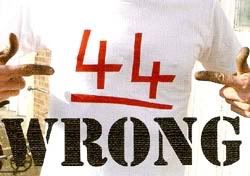The reason Spark attracted my attention is that they support social entrepreneurship in the field of homelessness, and a trailblazing Cambridge social enterprise which serves homeless people, their friends and the agencies who serve them in a unique way is trying to identify funds to keep going. In short, it's fighting for its existence.There are at least 55,000 social enterprises in the UK with a combined turnover of £27billion per year. They account for 5% of all businesses with employees and contribute £8.4billion per year to the UK economy - almost 1% of annual GDP.
In the Autumn edition of the Willow Walker magazine Gary Barrett, who has been rock-solid in overcoming his addiction and encouraging others to do the same, describes the difficulty in getting people together to plan a magazine when they're simultaneously struggling to recover:
I can sympathise with Mr Barrett because, taking over as as acting editor of a village magazine, I've seen some things move at speeds that make paint drying look hurried. But the case he makes illustrates precisely the case for a means of communication to tie together the members of disparate communities of homeless and vulnerably-housed people in Cambridge that isn't going to evaporate because things go too slowly for people who have recently been involved in lifestyles wherein gratification, when obtained, is instant.After the Relapse Prevention Course I came up with the idea of a magazine. We got together a few of us ex-addicts, some of them are on meth [methadone], some of them are off...We had a magazine meeting this morning and I was the only one who turned up because the others have floated off because it's just taken too long.
That means of communication is the Willow Walker itself, and its prominence in the homeless community and the agencies serving it is recognised in Cambridge City Council's Single Homeless and Rough Sleepers Strategy 2006-09, where, in the section on User Involvement, the Council sets as a "medium" priority (the highest in that strand)that "results must be fed back to users via the Willow Walker or alternative communication mediums".
The Willow Walker's funding has been cut off because, as Chris Havergal writes in the Cambridge News, the the Council "'have concluded we are not going to support Willow Walker. We support a range of projects, including a contract we have with WinterComfort, and we don’t want to duplicate'." It was only possible to bring out the Autumn edition of the Willow Walker because of a generous donation from Cambridge University Press and the gift of professional photographer Suzanne Middlemass's time and considerable talents.
 Wintercomfort, based in the city's Overstream House, supports those who are homeless or at risk of losing their accomodation and provides valuable services: for example, it's developing a weaving business based on social enterprise lines and using, ironically enough, willow. But it doesn't duplicate the vital role as a communications hub that is filled solely by the Willow Walker whose editor, social entrepreneur and community artist Kirsten Lavers, stands at the centre to stop things evaporating.
Wintercomfort, based in the city's Overstream House, supports those who are homeless or at risk of losing their accomodation and provides valuable services: for example, it's developing a weaving business based on social enterprise lines and using, ironically enough, willow. But it doesn't duplicate the vital role as a communications hub that is filled solely by the Willow Walker whose editor, social entrepreneur and community artist Kirsten Lavers, stands at the centre to stop things evaporating. One of the many interesting and commanding articles in the Autumn edition was written by Dr Christine Hugh-Jones, who is the doctor in charge of Cambridge's Access Surgery, which takes on homeless clients. She was writing about the pioneering Joint Strategic Needs Assessment for Homeless produced for Cambridgeshire NHS by Drs Jeremiah Ngondi and Fay Haffenden. Click on the link in the last sentence to view this important document as a PowerPoint file. Here's a whistlestop tour of it:
One of the many interesting and commanding articles in the Autumn edition was written by Dr Christine Hugh-Jones, who is the doctor in charge of Cambridge's Access Surgery, which takes on homeless clients. She was writing about the pioneering Joint Strategic Needs Assessment for Homeless produced for Cambridgeshire NHS by Drs Jeremiah Ngondi and Fay Haffenden. Click on the link in the last sentence to view this important document as a PowerPoint file. Here's a whistlestop tour of it:Analysing anonymised statistics from the Access Surgery, one of their many grim findings was that the average age at death of homeless people in Cambridge is 44, which the press managed to garble into "life expectancy of homeless people in Cambridge is half that of the rest of the population of Cambridgeshire". Through the Willow Walker, Dr Hugh-Jones was able to explain to its readers that the Access Surgery's clients had, on Ngondi and Haffenden's analysis, a 2-3% chance of dying in the next year - "This is still much too high but it does not mean that if you are forty you have only four years to live". (Although the four obituaries at the end of the magazine are a sobering reminder of mortality on the streets.)
 The projects that have budded from the Willow Walker have taken the Big Issue slogan of "a hand up, not a handout" and put it to work. I've already written about the radio show Homeless Truth's getting the police's point of view into the heart of the homeless community: in the latest Willow Walker there's a brilliant picture of one of the show's broadcasters, Laila Antoun, interviewing Tony Benn.
The projects that have budded from the Willow Walker have taken the Big Issue slogan of "a hand up, not a handout" and put it to work. I've already written about the radio show Homeless Truth's getting the police's point of view into the heart of the homeless community: in the latest Willow Walker there's a brilliant picture of one of the show's broadcasters, Laila Antoun, interviewing Tony Benn.Dr Hugh-Jones' comment about the misquoted survey could apply to a range of issues affecting hard-to-reach communities in Cambridge: "What a pity no-one except the Willow Walker has bothered to report this".

Other posts related to the Willow Walker:
Homeless not hopeless
Catching Street Voices
Both Sides of the Tracks
Save the Willow Walker
The Willow Walker looks for a funder
Top Ten songs about Thomas












Hi Frugal Dougal, This is a topic I will highlight on my blog soon. Please keep me updated on any developments. And well done to you for doing such a great job there.
ReplyDeleteI will do - thank you very much for your interest!
ReplyDeleteI really interesting article homeless services
ReplyDelete